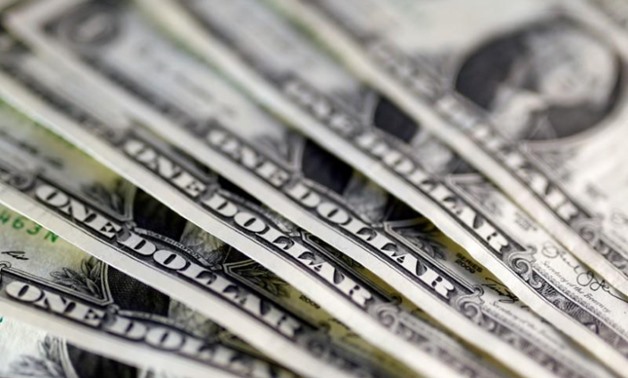
U.S. dollar notes are seen in this November 7, 2016 picture illustration - REUTERS/Dado Ruvic/Illustration/File Photo
NEW YORK - 1 March 2018: The dollar rose to five-week highs on Wednesday on the prospect of tighter monetary policy and an upbeat U.S. economic outlook from the Federal Reserve’s new chief, while global equity markets slid on declines by China’s Tencent and Celgene Corp.
Also pushing the greenback higher was euro zone inflation slowing to a 14-month low, which knocked the euro to six-week lows and underscored the European Central Bank’s caution in removing monetary stimulus in the region.
The dollar in February posted its strongest monthly performance since November 2016 as it also rose to a two-month high against the Canadian dollar and a six-week high against sterling.
“The dollar has found tailwinds in America’s sturdy economy and its hawkish central bank,” said Joe Manimbo, senior market analyst at Western Union Business Solutions in Washington.
The dollar index gained 0.34 percent, with the euro down 0.27 percent to $1.2198. The Japanese yen firmed 0.55 percent versus the greenback at 106.73 per dollar.
Stocks globally snapped a record 15-month winning streak, pulled lower by Chinese conglomerate Tencent Holdings because of its large stake in Singapore-based Sea Ltd, an online gaming and e-commerce firm, and Celgene.
Sea posted a larger-than-expected fourth-quarter loss and the departure of its president, who was the public face of its U.S. listing last year. Sea ADR’s fell 10.6 percent in New York.
Celgene said late Tuesday that U.S. health regulators rejected its application seeking approval of a key multiple sclerosis drug due to insufficient data. The surprise development will likely delay the entry to market of one of Celgene’s most important pipeline assets.
Tencent fell 3.1 percent, the biggest drag on MSCI’s all-country world index, which fell 1.1 percent as Celgene closed down 9 percent.
The pan-European FTSEurofirst 300 index of leading regional shares fell 0.72 percent to close at 1,487.20.
On Wall Street, the Dow Jones Industrial Average fell 380.83 points, or 1.5 percent, to 25,029.2. The S&P 500 lost 30.45 points, or 1.11 percent, to 2,713.83 and the Nasdaq Composite dropped 57.35 points, or 0.78 percent, to 7,273.01.
Longer-dated U.S. Treasury debt yields slipped on expectations that a faster pace of Federal Reserve interest rate increases would cool U.S. inflation and economic growth.
U.S. economic growth slowed slightly more than initially thought in the fourth quarter as the strongest pace of consumer spending in three years drew in imports and depleted inventories.
Benchmark 10-year U.S. Treasury notes rose 11/32 in price to push their yield down to 2.8679 percent.
Euro zone bond yields held near recent lows as inflation in the bloc slowed, potentially complicating the European Central Bank’s plan to remove stimulus and move towards raising rates.
U.S. oil prices fell 2.3 percent and gasoline futures tumbled after the U.S. government said crude inventories rose more than expected while gasoline stocks posted a big build instead of the draw that was forecast.
U.S. crude inventories rose by 3 million barrels for the week ending Feb. 23, compared with analyst expectations for a build of 2.1 million barrels. [EIA/S]
U.S. crude fell $1.37 to settle at $61.64 per barrel and Brent settled down $1.28 at $65.78.
U.S. gold futures settled down 70 cents or 0.1 percent, at $1,317.90 per ounce.


Comments
Leave a Comment